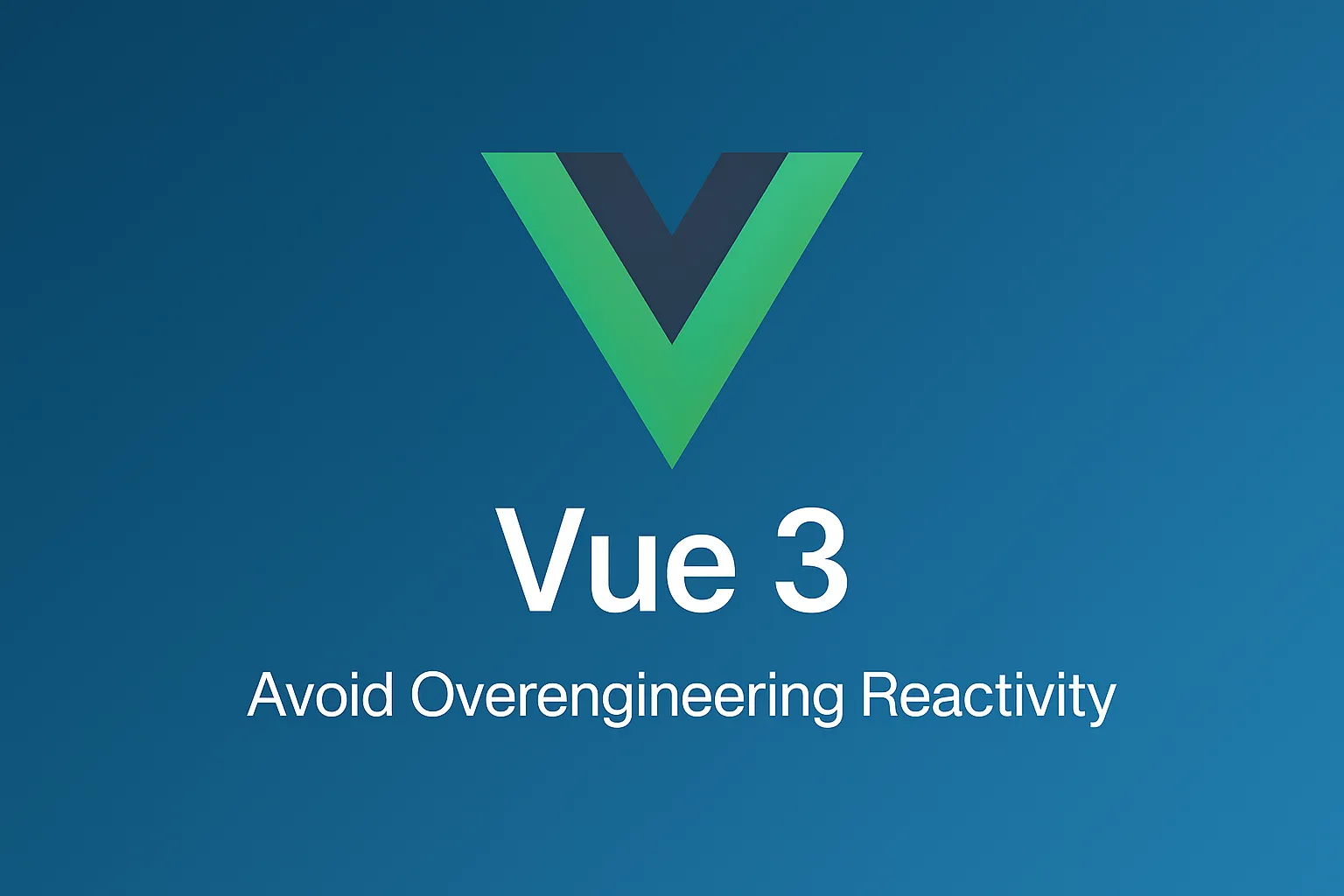Avoid Overengineering Reactivity in Vue 3: Let Your Components Own Their Data
Learn how to avoid overengineering in Vue 3 by managing data locally in your components and embracing its declarative reactive architecture.

In modern front-end development, especially when working with Vue 3, it's easy to fall into the trap of overengineering component communication and data flow. This often happens when developers transition from traditional server-rendered, session-based frameworks like Laravel, Symfony, or Spring — and bring along habits that don't fit well in a reactive, stateless architecture.
Why This Happens: Stateful Thinking in a Stateless World
One of the root causes is the shift from stateful to stateless architecture.
In classic MVC applications, the backend often remembers the user's state through sessions. It knows who the user is, what they just did, and what should happen next — making it easy to control data and UI flow from a centralized point.
Vue 3 apps, on the other hand, typically communicate via REST or GraphQL APIs, which are stateless. Every request must be complete in itself. There's no persistent server-side memory of what the user just did unless you build that manually.
This mismatch in mental models leads many developers to implement event-driven or shared-store patterns in Vue apps to recreate that server-driven control — but this often results in overly complex and fragile architecture.
The Problem: Externally-Driven Components
Here's the pattern that shows up:
- A component does not fetch or manage its own data.
- Instead, it waits for an external signal — an event, a global store change, or an emitted trigger.
- The flow becomes fragmented. Component A emits an event, Component B reacts, and Component C updates its UI.
- There's hidden coupling and unclear data ownership.
This kind of indirect logic:
- Obscures the flow of data and reactivity
- Makes debugging harder
- Introduces subtle bugs and race conditions
- Breaks encapsulation and reusability
- May result in unmaintainable code in the medium term if not earlier
Vue 3 Wants You to Think Declaratively
Vue 3 and its Composition API promote a declarative approach:
- Each component should manage its own data lifecycle.
- Components should react to their own state or prop changes, not external triggers.
- Shared state should live in a store only if it's actually shared.
Trying to force imperative thinking into a declarative system defeats the point of using Vue. By the way, this is a common pitfall in new technologies that we try to apply previous technology patterns, which can go against the paradigm of the new one.
Real-World Example
❌ Bad:
// Somewhere globally
bus.emit('refresh-users')
// Inside UserList.vue
bus.on('refresh-users', () => {
fetchUsers()
})
This setup creates hidden dependencies. If you remove the global event, the component breaks.
✅ Good:
// Inside UserList.vue
onMounted(() => {
fetchUsers()
})
watch(() => props.userId, () => {
fetchUsers()
})
This is predictable, self-contained, and much easier to test and refactor.
Use Stores Responsibly
Stores like Pinia are excellent tools, but not every piece of data belongs there. Overusing the store for everything leads to unclear state boundaries.
Ask yourself:
- Is this state truly shared?
- Or is it just needed for this one view or feature?
If it's local, keep it local — use ref, reactive, or watch inside the component or composable.
Final Thoughts
Vue 3 gives you the tools to build maintainable, testable, and elegant applications — but only if you respect the reactive, declarative nature of the framework.
If you try to recreate traditional server-driven patterns in your frontend, you'll end up with a mess of events, subscriptions, and hard-to-follow dependencies.
Let your components own their own behavior and data.
A healthy SPA starts with healthy component boundaries.